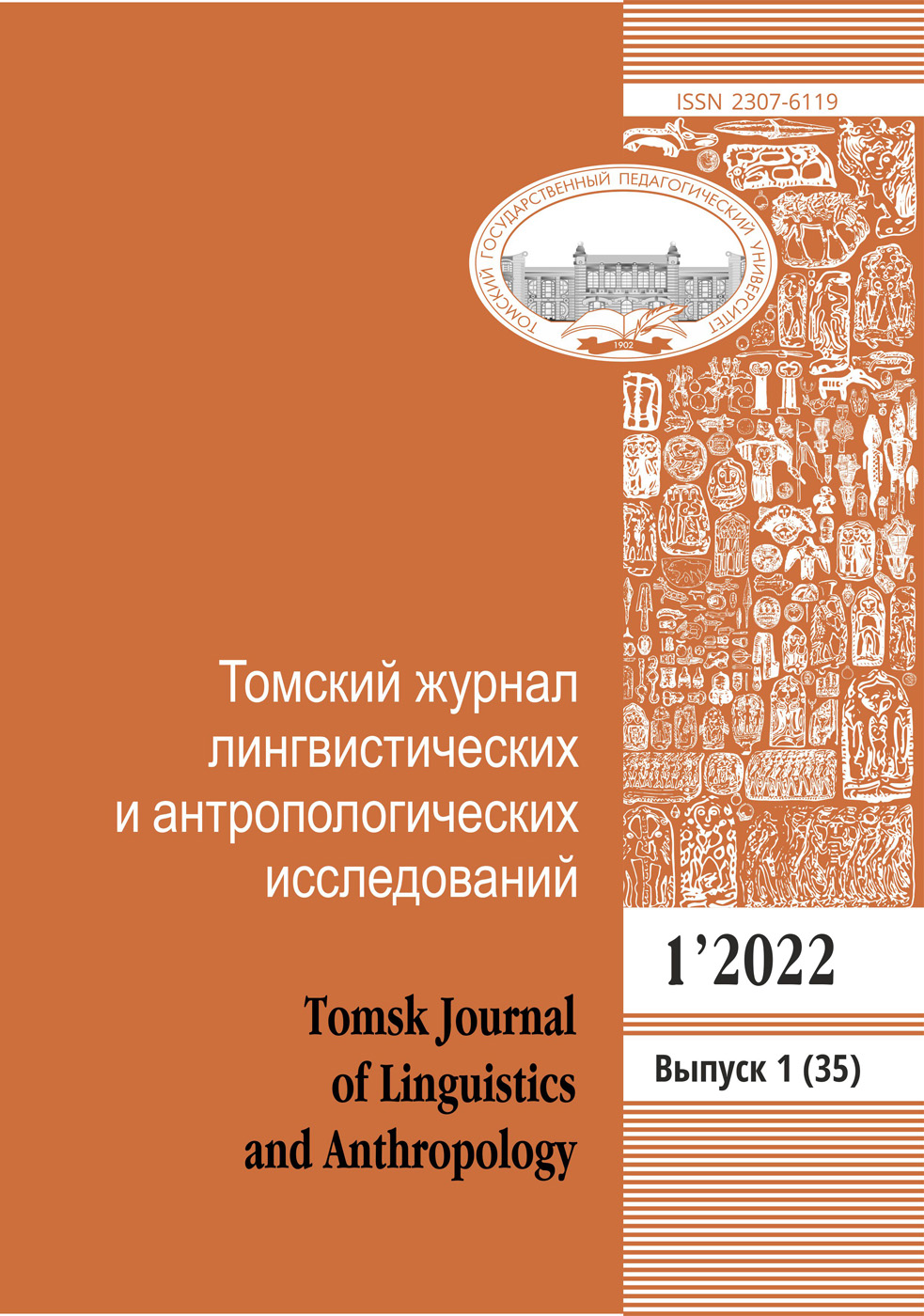THE TEXTUAL PARADIGM OF ANTONYMY TYPE AS A REFLECTION OF THE POETIC PICTURE OF THE WORLD OF THE AUTHOR
DOI: 10.23951/1609-624X-2017-3-126-131
The article examines the paradigms of antonymous type with the aim of identifying their individual characteristics and relation to the thematic areas of the poetic picture of the author’s world. Antonymous paradigms are considered from the point of view of their differentiation into verbal and ultra verbal, usual and not usual, complete and incomplete. Presents thematic classification of textual paradigms of antonymous type. Examines the role of their representation of the author’s poetic picture of the world. The research is done in the trend of communicative stylistics of the text and includes analysis of the material of the early lyrics by Tsvetaeva from 1909 to 1919. 343 verses and 32 cycles were analyzed in the article, and 416 textual paradigms of antonymous type were revealed. It was determined that a “Person” as a personality, his relations with other people and with society, and with a whole world are in the center of poetic world by Marina Ivanovna Tsvetaeva. As a rule, this “Person” is a poetic “Ego” of the author. Youthful maximalism and the world perception connected with it, M. Tsvetaeva carried for the rest of her life. It is proved on the example of the textual paradigms of antonymous type and connected with them fields of the author’s concept sphere that a contrast turned into the one measure of visual environment, relations with other people, evaluation of the other people’s and her own personality.
Keywords: textual paradigm of type antonymy, antonyms, poetic picture of the world, concept
References:
1. Semenova T. Yu. Tekstovye paradigmy antonimicheskogo tipa v poezii M. I. Tsvetaevoy [The textual paradigm of antonymy in the poetry of M. I. Tsvetaeva]. Vestnik Tomskogo gosudarstvennogo pedagogicheskogo universiteta – TSPU Bulletin, 1998, vol. 6 (9), pp. 11–13 (in Russian).
2. Bolotnova N. S. Leksicheskaya struktura khudozhestvennogo teksta v assotsiativnom aspekte [Lexical structure of literary text in an associative dimension].Tomsk, 1994, 210 p. (in Russian).
3. Bolotnova N. S. Kommunikativnaya stilistika teksta: slovar’-tezaurus [Communicative stylistics of text: thesaurus]. Moscow, 2012, 384 p. (in Russian).
4. Sovremennyy slovar’ inostrannykh slov [Contemporary dictionary of foreign words]. Moscow, 1992. 740 p. (in Russian).
5. L’vov M. R. Opyt sistematizatsii leksicheskikh antonimov [The experience of systematization of lexical antonyms]. Aktual’nye problemy leksikologii i leksikografii [Actual problems of lexicology and lexicography]. 1999. Pp. 307–311 (in Russian).
6. Likhacheva O. N. Osobennosti gradual’nykh antonimov v russkom i angliyskom yazykakh [Features of gradable antonyms in Russian and English]. Nauchnye trudy Kubanskogo gosudarstvennogo tekhnologicheskogo universiteta – Scientific works of KubSTU, 2015, pp. 1–12 (in Russian). URL: http://ntk.kubstu.ru/file/505 (accessed 25.11.2016).
7. Stepanov Yu. S. Obshcheye yazykoznaniye [General linguistics]. Moscow, 1975. 271 p. (in Russian).
8. Zubova L. V. Poeziya Mariny Tsvetaevoy. Lingvisticheskiy aspect [Poetry of Marina Tsvetaeva. The linguistic aspect]. Leningrad, 1989 (in Russian). URL: http://coollib.com/b/246496/read (accessed 15.11.2016).
9. Psikhologicheskiye izmeneniya v kharaktere podrostkov [Psychological changes in the characters of teenagers] (in Russian). URL: http://www.doctorate.ru/psychologic-changes-teenager (accessed 01.11.2016).
Issue: 3, 2017
Series of issue: Issue 3
Rubric: COMMUNICATIVE STYLISTICS OF THE TEXT
Pages: 126 — 131
Downloads: 753





